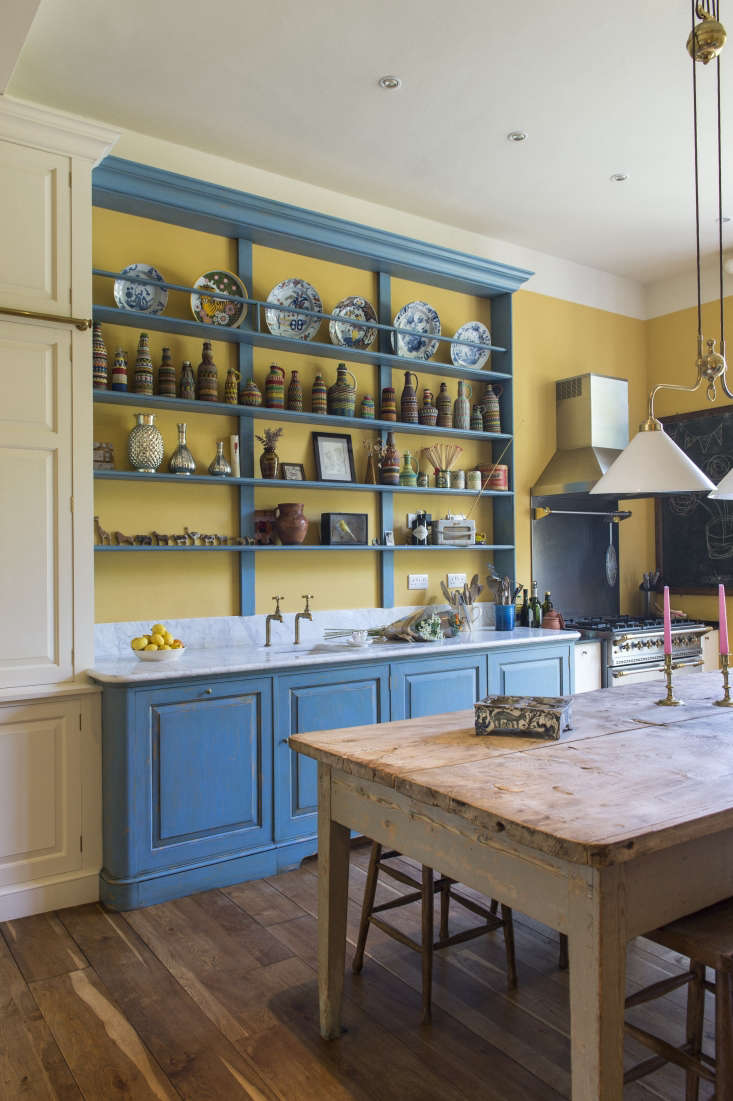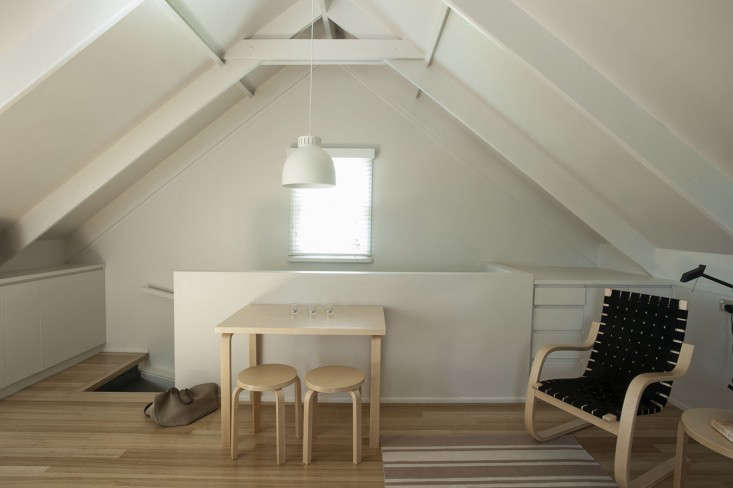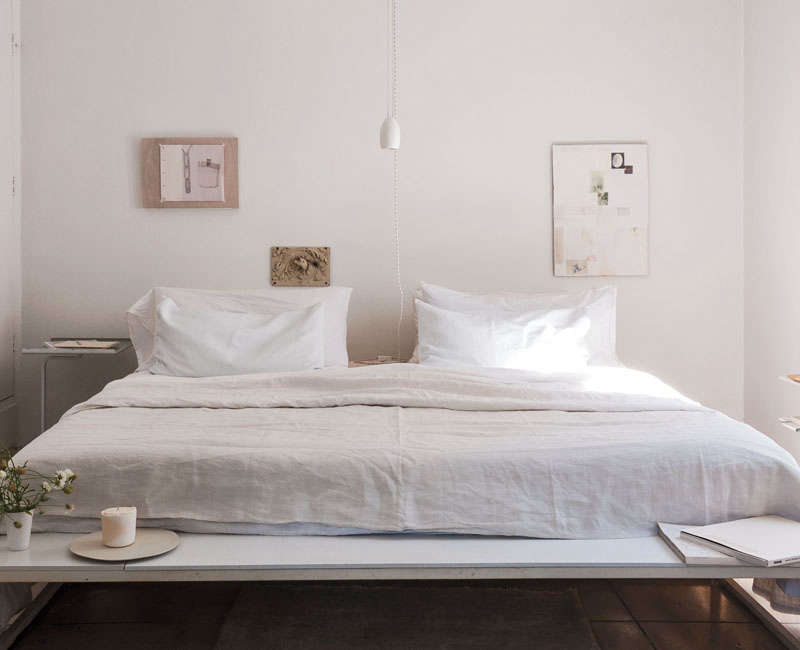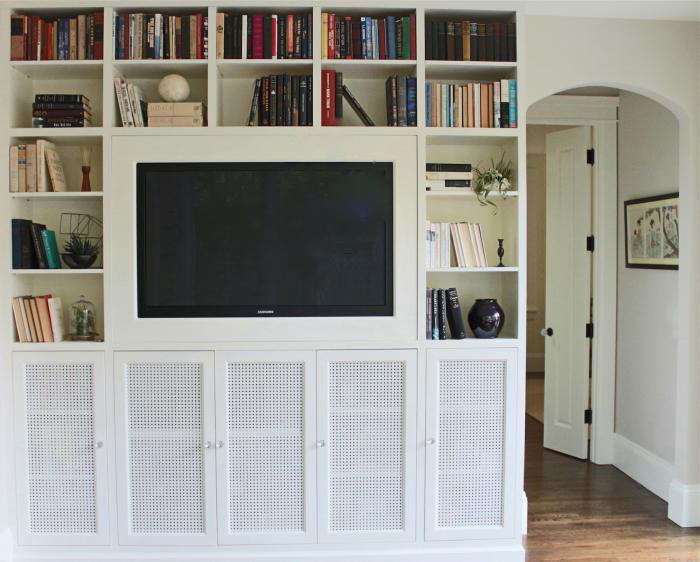In her monthly column for the Wall Street Journal, Gardenista editor Michelle tackles matters in interiors (even when her take is controversial). Here, she asks, “Where do nostalgia and interior design intersect?” Here’s the piece; see the original via the Wall Street Journal.

By re-assembling my mother’s lost china set, I cannot re-assemble my mother. I am aware of that. In fact, when she was alive I told her repeatedly I did not want 12 place settings of Adams’ Singapore Bird pattern, in which said bird was perched on a flowery branch against a pale blue background. Things are just things, I told her. There was nothing blue in my house. And food looks best served on plain white plates.
“You could paint the dining room blue,” she suggested one time. “A sky-blue pink would be a nice backdrop to the dishes.”
Sky-blue pink, which by the way is a paint color that does not exist, was my mother’s favorite hue. She liked to point it out at twilight: a tinge on the edge of the horizon where the sun was setting.
“I don’t like blue,” I said.
“You might get a blue rug some day,” she said.
“Never,” I said.

These were the sorts of conversations my mother and I had fairly often for the first five decades of my life. Then, four years ago she died (nobody saw that one coming, she would have said) and six weeks later my father died (broken heart, she would have observed) and although we aren’t known for being a sentimental family, I bought a blue rug.
Where do nostalgia and interior design intersect? That’s where I’m living these days, as I shove aside stacks of white plates to make room for the past. Ever since my brother Joe sent my mother’s dishes to me, I‘ve been scouring the Internet as ruthlessly as a Russian hacker, on a quest to replace chipped or misplaced dinner plates, coffee cups, and gravy boats.
Many of my friends report similar obsessions. Julie displays her mother’s vintage Marimekko dress on the wall like art. Another bought a 1970s-era Brown Jordan patio furniture set. (“It had a resonance for me,” said Keith Crudgington, “but was so big I got it shipped by Greyhound.”) Sarah Horowitz took the impulse even further, spending a year and a half writing a book called Dry-Me-Dry to extol the virtues of midcentury dishtowels that inspired “nostalgia for my mother who told stories about growing up in upstate New York.“
Curiously, however, for centuries nostalgia was considered a disease. The Victorians tried to treat the malady with leeches. (But then what didn’t they try to cure with leeches?) Ever since Odysseus yearned for home (nostos) in pain (algos), the common wisdom was that nostalgia ruins one’s enjoyment of the present. Happily, that idea has gone the way of leeches.

“Actually, nostalgia is a positive thing—feeling connected to the past is an important way to remind yourself of who you are, where you came from, and why life matters,” said Clay Routledge, a psychology professor at North Dakota State University. Routledge is a nostalgia expert whose research shows the emotion actually cures sadness instead of causing it. “There’s nothing intrinsically magical about your dishes, or any family heirloom. But they make you feel happy—and give you a reason to talk about your mother.”
Yes, my mother! She grew up in the Appalachian hills of eastern Kentucky where a matched set of fancy English china was unheard of. So when the dishes arrived at our home in the Chicago suburbs one morning in the 1960s, it was as if a parade, with clowns throwing candy, had marched up the front path and into our living room. I must have been five, and my brother Jack three and a half, playing Batman in our superhero capes (kitchen aprons).The deliveryman said he was surprised to see children swinging from the curtains, but backed off after my mother, who saw that one coming, gave him a look. The rest of the morning was spent happily stacking blue, be-birded plates.
I think of that now, when I look at those plates, but can’t help worrying that my nostalgia clashes with the interior design of my home. I love my mother’s dishes because I loved her, and she loved them. But I think of myself as more of an Astier de Villatte person than a Singapore Bird.
Plus, thanks to eBay and Etsy and the world’s biggest discontinued-china retailer Replacements Ltd., it is now incredibly easy to collect (hoard?) the once-obscure items from our pasts. With annual sales of $80 million and a 425,000-square-foot warehouse (“roughly the size of eight football fields,” said Replacements founder Bob Page), the store is stocked with thousands of discontinued patterns. “There have been many days when I’ve seen people start crying when they finally find their mother’s china,” Mr. Page said. The store sends daily email alerts to customers who are looking for particular patterns—including the 4,581 who collect Singapore Bird.

“I’m currently up to sixteen place settings and am starting to worry my house will turn into a theme park where the theme is my childhood,” I told Prof. Routledge.
“I have a lot of these conversations about that topic with my wife, who is an interior design student,” he mused. “Nostalgia isn’t about pulling your home into the past. It’s more about pulling the past into the present, where you can put your own creative stamp on it.”
True, there are a lot of things my mother loved that I immediately passed along to the consignment store (I’m looking at you, cranberry red wineglasses), and I would never want my three daughters to feel as if they have to keep the blue dishes just because I did. They’ll have their own nostalgia to make room for on their shelves.
My hope is that they won’t be afraid to mix and match without feeling oppressed by the past. Maybe another word for the good that happens when nostalgia meets design is eclecticism. Pairing your midcentury modern Eames lounge chair with your grandmother’s crystal chandelier? It’s in.
Read Michelle’s latest here:
- Remodeling 101: Why Kitchen Islands Are Ruining America’s Kitchens
- The Design Skeptic: Minimalism Is Overrated




Have a Question or Comment About This Post?
Join the conversation (3)